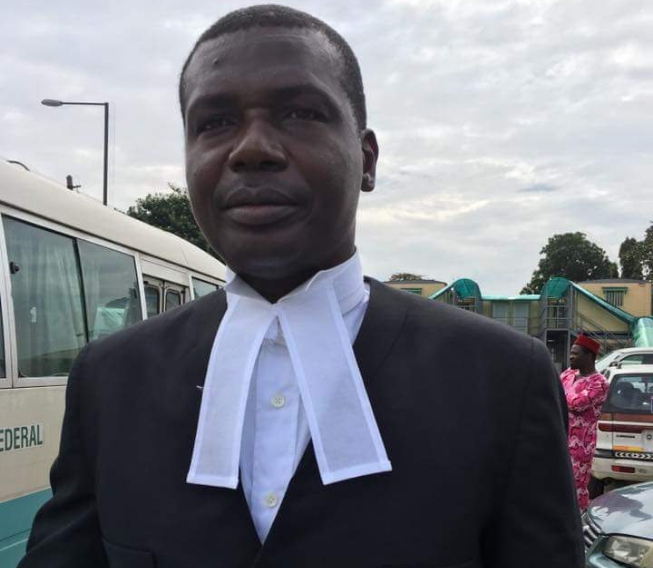By Ebun-Olu Adegboruwa, SAN
WHO ARE THE VICTIMS OF GBV AND WHO IS MOST AT RISK?
GBV can manifest in a variety of ways. Some of these include: physical violence, such as assault or slavery; emotional or psychological violence, such as verbal abuse or confinement; sexual abuse, including rape; harmful practices, like child marriage and female genital mutilation; socio-economic violence, which includes denial of resources; and sexual harassment, exploitation and abuse. Gender-based violence can happen to anyone. However, it disproportionately affects women and girls. Those in crisis settings are at a double disadvantage due to their gender and their situation. Women and girls from other diverse and marginalized communities face an even greater risk where gender inequality intersects with other forms of oppression. Those at higher risk include: women and girls living with disabilities, young and adolescent girls, older women, women of ethnic minorities, refugees and migrants, et cetera.
While we reference these different identities separately, each person holds multiple identities at once. For example, a woman who lives with a disability might also be an older refugee. This is why it is important to understand the concept of intersectionality — that a person faces different kinds of discrimination and risks due to a combination of their identities like gender, race, religion, age. It is crucial to understand intersectionality when working to determine and provide prevention and response services. For instance, research has found that adolescent girls living in displacement are particularly at risk of being overlooked in emergency settings, where they may fall between the cracks of child protection services and those aimed at adult women. According to the South African Police Service, 988 women were killed between April 2020 and September 2022 in incidents of gender-based violence.
CAUSES OF GENDER-BASED VIOLENCE
Gender inequality, and the norms and beliefs that violence against women and girls is acceptable, are some of the main causes of gender-based violence. There are also many other factors that increase the risk of GBV, with women and girls living through crises experiencing an increase in both the frequency and severity of GBV. This is because the same conditions that contribute to conflict and forced displacement also accelerate GBV. These include:
1. POVERTY: Research has shown that when families are pushed into poverty, harmful practices like child marriages increase. Young girls may be pulled out of education for marriage, to help with domestic tasks or to generate an income. Unemployment and economic distress in the household can increase instances of GBV, as well.
2. BREAKDOWN OF SERVICES: A collapse of community structure and the rule of law means women can find themselves without social support and protection systems in violent situations. It can also result in women and girls traveling great distances in search of food, water or fuel, further increasing the risk of sexual harassment and assault.
3. CONFLICT AND WAR: Rising numbers of conflicts globally are driving an increase in conflict-related sexual violence (CRSV). Without the rule of law, CRSV is often carried out with impunity. Armed forces may use rape as a weapon of war. Other forms of CRSV include sexual slavery, forced prostitution, forced pregnancy, forced abortion, enforced sterilization, forced marriage and other forms of sexual violence.
4. DISPLACEMENT: Women living in refugee camps and other temporary accommodation can face safety issues that put them at greater risk. This can include having no locks on bathroom doors, joint male and female facilities, and inadequate lighting. Women living as refugees may have to find new livelihoods, which can lead to an increased risk of exploitation. Displaced women and girls in emergencies are often less visible. They’re not always included in national surveys or reports, which means their needs go unmet.
5. STRESS IN THE HOME: Intimate Partner Violence (IPV) is the most common form of violence women experience in humanitarian settings. Diverse research suggest that IPV and child maltreatment and abuse occur more frequently when families experience an inability to meet their basic needs, alcohol and substance abuse and inconsistent income.
EFFECTS OF GENDER-BASED VIOLENCE
Violence has a long-lasting effect on survivors and their families. Impacts can range from physical harm to long-term emotional distress to fatalities. Rape and sexual assault can result in unwanted pregnancies, complications during pregnancy and birth, and sexually transmitted infections, including HIV.
Women are disproportionately affected by violence and gender inequalities, rendering violence against women a significant public health problem. In countries with high HIV prevalence, violence against women is common, and studies have shown that women who experience violence, sexual or physical, are at higher risk of acquiring HIV. Therefore, addressing violence is necessary to curtail the HIV epidemic.
There is a clear need to scale up efforts across a range of sectors, both for violence prevention and to provide necessary services for women experiencing violence. Social and economic fallout from GBV can lead to a loss of livelihood and increased gender inequalities in the long term. Reporting or seeking services for GBV can lead to further threats of violence, social stigma and ostracization. GBV is also a key barrier to women and girls accessing other life-saving services, such as food, shelter and healthcare. Crises are not short-term occurrences. Climate-related disasters can create recurrent crises and many women and girls who are forcibly displaced can end up living in temporary accommodation for years. This exposes women and girls to GBV for a longer period and it can draw out and compound the effects of such violence for decades, hampering long-term resilience and empowerment.
JUSTICE FOR VICTIMS OF GENDER-BASED VIOLENCE
Everyone has the right to an effective remedy by a competent national tribunal for acts violating the fundamental rights granted to him by the Constitution or by law. Article 8 of the Universal Declaration of Human Rights (UDHR) enshrines the right of every victim of human rights abuse to an effective remedy for the harm done to them, and as such it creates a requirement for states to ensure that victims are able to access the justice system to seek redress. Access to justice is fundamental to the protection of women’s rights and makes the realization of all other rights for women and girls possible, including the right to live free from discrimination and inequality. The Nigerian authorities have stepped up their efforts to ensure that the criminal justice response to Sexual and Gender Based Violence (SGBV) is comprehensive, timely, and compliant with international human rights standards and the rule of law, while also operationalizing important legislation and policy tools, such as the Violence Against Persons’ Prohibition (VAPP) Act, 2015.
The Federal Ministry of Justice (FMoJ) established a Sexual and Gender Based Violence Response Unit in May 2021 to review laws and policies related to SGBV offences with a view to streamlining procedures to ensure access to justice for victims of SGBV – through both prosecution and alternative dispute resolution – and to help build the capacity of prosecutors, judges and law enforcement officers to handle such cases.
Many State-judiciaries have begun to create special courts in tackling the offence of GBV offences. For instance, the Lagos State High Court has since designated the Special Offences Court and the Sexual Offences Court for prosecuting crimes related to GBV. Also, in March 2022, the judiciary of the Federal Capital Territory (FCT) further built on this initiative by designating six High Court judges to preside over SGBV cases, in order to prioritize the hearing of SGBV cases, to provide tailored protection to victims, and to ensure the effective prosecution of offenders. Other courts need to replicate and improve upon these initiatives. Section 34 of Constitution of the Federal Republic of Nigeria 1999 (as amended) provides that every individual is entitled to respect for the dignity of his/her person and accordingly no person shall be subjected to torture or to inhuman or degrading treatment.
The Violence Against Persons Prohibition Act, 2015 which was enacted to prohibit all forms of violence in private and public life is a commendable piece of legislation. It provides the maximum protection and offer effective remedies for victims, punishment of offenders and for other matters relating thereto. This Act is only applicable in FCT Abuja, however, some States which include Anambra, Bauchi, Enugu, Kaduna and Oyo have also passed it into their own laws. Section 44 of the said Act empowers the National Agency for the Prohibition of Trafficking in Persons (NAPTIP) as a regulatory body mandated to administer the provisions of the law and to collaborate with the appropriate stakeholders.
The Protection Against Domestic Violence Law of Lagos State (PADVL), in its Section 1 provides that “no person shall commit domestic violence against any person under the Law”. This law is only applicable in Lagos State. By virtue of this Law, the Magistrate Court or High Court in Lagos State have the jurisdiction to hear and to determine criminal matters arising from this Law. The Court is also statutorily empowered to grant interim protective orders in favour of a person who is being abused. These are few other laws of other States in Nigeria regulating Gender-Based Violence.
Dear readers, we really need your support to keep on serving you with authoritative, truthful, and juicy stories everyday. For your support, please reach out to the editor @gavelinternational66@gmail.com

